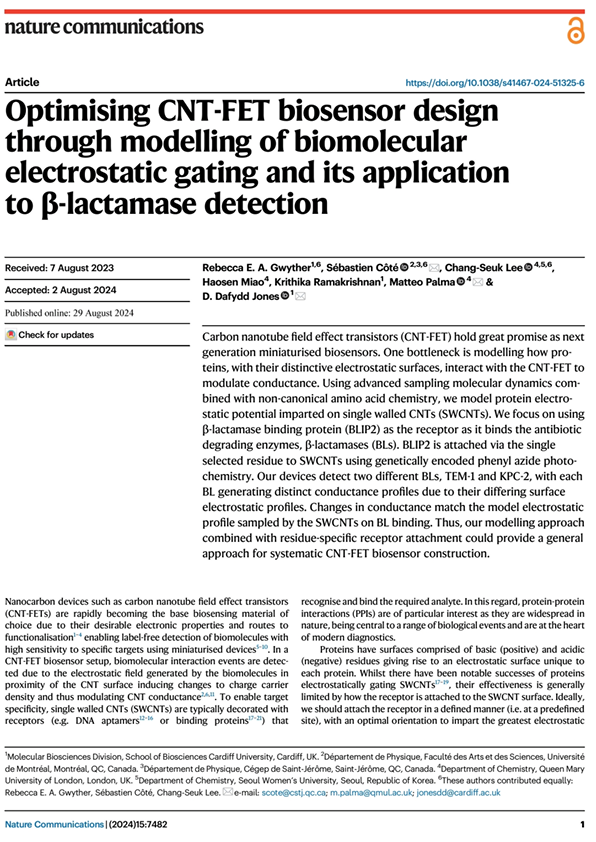Optimising CNT-FET biosensor design through modelling of biomolecular electrostatic gating and its application to β-lactamase detection
This paper of the days presents an advanced approach to enhancing carbon nanotube field-effect transistor (CNT-FET) biosensors by precisely modeling protein electrostatic interactions. It focuses on detecting antibiotic resistance enzymes such as TEM-1 and KPC-2, leveraging the β-lactamase inhibitory protein (BLIP2) to trigger conductance changes in CNTs. The research combines molecular dynamics simulations, non-canonical amino acid chemistry, and cutting-edge nanoscale fabrication techniques to optimize sensor performance. The findings provide valuable insights for designing highly sensitive CNT-FET biosensors, with promising applications in detecting antimicrobial resistance and enabling rapid, accurate bio-detection platforms.


